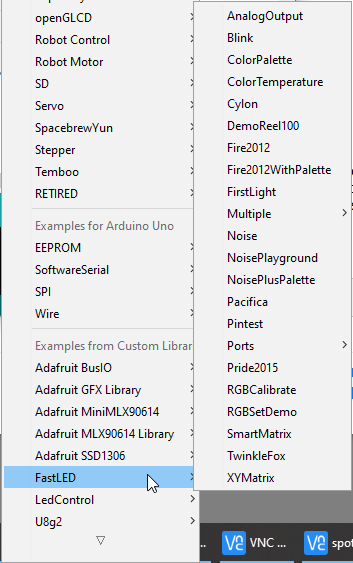

Part #: {{ products[active_product_id].sku }}
Part #: N/A
{{added_to_cart_message}} View cart »
Sorry, that product is unavailable right now.
{{ products[active_product_id].in_stock }} in-stock for immediate shipment.
This product is currently out-of-stock.
Product Details:
Product Description
These tiny (10mm diameter) circuit boards hold a bright 5050 sized SMD RGBW LEDs and a WS2812B addressable LED driver IC.
They can be daisy-chained to create long strings of brilliant colorful LEDs. Best of all, each LED in the chain can be individually controlled by an Arduino, Raspberry Pi, or other microcontroller. The WS2812B handles all of the communication by means of a single wire bus so you can string together as many as you like while only tying up one I/O pin on your device!
Vetco's Party Pixels are easy to wire - only 3 wires (+5V, Data, and GND) are required for operation.
6 Small solder pads on the back of the PCB interface to this LED, and provide connections for the next LED in the chain. The solder pads work well with 26~28AWG ribbon cable wire.
| 5V | 5VDC Input |
| Din | Data Input (from Arduino or previous LED in chain |
| GND | Ground |
| 5V | 5VDC Output (to next LED in chain) |
| Dout | Data Output (to next LED in chain) |
| GND | Ground (to next LED in chain) |
Documenation:

Hint for soldering: Hold each pixel down with tape or in a small vise. Tin the solder pads first. Keep the stripped wire leads short to avoid shorting out to adjacent pads. Only a standard size soldering iron tip is required - no need to get fancy. Wiring these is as simple as connecting the output pads from one LED to the corresponding input pads on the next.
This is a package of 5 LED Pixels - You must solder wires to them yourself.